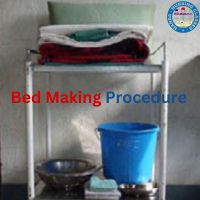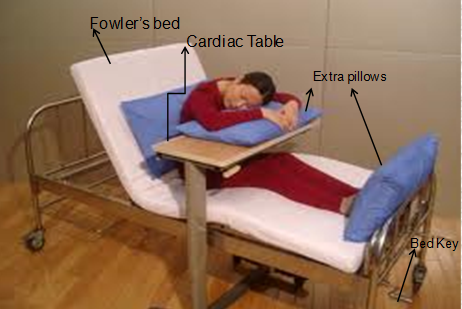Sponge bath Introduction
Sponge bath, also known as bed bath or bed wash, is a hygiene procedure performed by nurses to clean and refresh a patient who is unable to bathe independently. It involves using a sponge or washcloth, along with water and mild soap, to cleanse the patient’s body while they remain in bed. Sponge baths not only promote cleanliness but also provide comfort and contribute to the overall well-being of the patient.

Sponge bath Definition
A sponge bath is a method of bathing in which a nurse or caregiver cleanses the patient’s body using a sponge, water, and soap while the patient is lying in bed. It is a gentle and effective way to maintain hygiene and promote skin health when a traditional shower or bath is not feasible.
Sponge bath Purpose
The primary purpose of a sponge bath is to ensure cleanliness, hygiene, and comfort for patients who cannot bathe independently. It helps prevent infections, skin breakdown, and unpleasant body odor. Additionally, sponge baths promote circulation, relaxation, and a sense of well-being for the patient.
Sponge bath Indication
Sponge baths are indicated for patients who have limited mobility, are bedridden, have wounds or injuries that restrict traditional bathing, or are recovering from surgery. They are commonly performed in hospitals, long-term care facilities, and home care settings.
Sponge bath Contraindication
While sponge baths are generally safe, there are a few contraindications to consider. These include patients with severe burns, open wounds, skin infections, or medical conditions that require them to avoid water contact or temperature changes. It is important to consult with the healthcare team to determine the suitability of a sponge bath for each patient.
Advantages and Disadvantages of Sponge bath
Advantages of sponge baths include maintaining cleanliness, promoting skin health, preventing infections, and providing comfort to patients. They are relatively quick and convenient, requiring minimal equipment and space. However, some disadvantages include the potential for incomplete cleansing of hard-to-reach areas and the need for assistance from caregivers.
Equipment use in Sponge bath procedure
The equipment required for a sponge bath typically includes:
- Basin or bowl of warm water
- Mild soap or no-rinse cleanser
- Soft sponge or washcloth
- Towels or disposable wipes
- Gloves (if necessary)
- Bed protection (such as waterproof pads)
Sponge bath Procedure
Step-by-Step Guide for Performing a Sponge Bath
Preparation
Gather all necessary supplies: basin, warm water (around body temperature), soap or mild cleanser, washcloths, towels, gloves, and a privacy screen if needed.
Ensure the room temperature is comfortable, and maintain privacy and dignity for the patient.
Explain the procedure to the patient, addressing any concerns or questions they may have.
Wash your hands and put on disposable gloves to maintain proper hygiene.
Positioning
Assist the patient into a comfortable and safe position for the sponge bath.
Ensure proper body alignment and support to prevent any discomfort or strain for the patient.
Starting with the Face
Moisten a washcloth in warm water and gently cleanse the patient’s face, starting from the forehead and moving down to the chin and neck.
Use a mild soap or cleanser if necessary, ensuring it is safe for facial use and avoiding contact with the eyes.
Rinse the washcloth frequently and pat dry the face with a soft towel.
Upper Body
Move to the upper body, washing one area at a time. Begin with the upper chest, then move to the arms, underarms, and hands.
Cleanse each area with a damp washcloth, using gentle circular motions, and paying attention to skin folds and creases.
Rinse and wring out the washcloth as needed, ensuring it remains warm and clean.
Dry each area thoroughly to prevent moisture-related skin issues.
Lower Body
Proceed to the lower body, washing the abdomen, legs, and feet.
Use a separate clean washcloth for each area to prevent cross-contamination and maintain hygiene.
Cleanse gently, especially around sensitive areas and any wounds or incisions.
Rinse and wring out the washcloth regularly to maintain cleanliness.
Thoroughly dry the skin, including between the toes and any skin folds, to prevent moisture-related problems.
Perineal Care
If needed, provide perineal care following the facility’s guidelines, using separate washcloths for cleansing and rinsing.
Ensure the patient’s comfort and privacy during this process, communicating with them and respecting their dignity.
Back and Hard-to-Reach Areas
If the patient is unable to independently reach their back or other hard-to-reach areas, offer assistance.
Use a long-handled sponge or washcloth to clean these areas thoroughly and gently.
Rinse and wring out the sponge or washcloth regularly to maintain cleanliness.
Dry the skin properly, paying attention to skin folds and crevices.
Disposal and Cleanup
Dispose of used washcloths and gloves in a designated waste receptacle.
Remove the basin and any remaining supplies from the patient’s vicinity.
Assist the patient in returning to a comfortable position or in getting dressed if needed.
Remove and dispose of gloves appropriately.
Wash your hands thoroughly to maintain proper hygiene.
Rationale of Sponge Bath Procedure
The sponge bath procedure is essential for maintaining personal hygiene, preventing infections, promoting patient comfort, and preserving skin integrity. By performing the sponge bath, nursing students can:
- Promote cleanliness and hygiene, which is crucial for overall well-being.
- Monitor the patient’s skin condition and detect any abnormalities or changes.
- Enhance patient comfort and improve their self-esteem.
- Maintain skin integrity by removing sweat, dirt, and bacteria that can cause skin breakdown or infections.
- Provide an opportunity for observation, allowing nursing students to assess the patient’s general health and well-being.
- Establish a therapeutic nurse-patient relationship by respecting the patient’s privacy, dignity, and autonomy throughout the procedure.
- Practice infection control principles, including proper hand hygiene and proper disposal of contaminated items.
Note: It is essential for nursing students to refer to their institution’s specific guidelines, policies, and procedures regarding sponge baths and adapt the procedure accordingly.
Nursing Responsibilities:
Nursing responsibilities during a sponge bath include:
- Assessing the patient’s condition and suitability for a sponge bath.
- Explaining the procedure and obtaining patient consent.
- Ensuring privacy and maintaining a comfortable environment.
- Practicing proper infection control measures, including hand hygiene and using gloves when necessary.
- Using gentle and appropriate techniques to avoid skin damage or discomfort.
- Monitoring the patient’s vital signs and general well-being throughout the procedure.
- Documenting the procedure, patient response, and any observed changes in the patient’s condition.
Conclusion
Sponge baths are an essential component of nursing care, providing hygiene, comfort, and cleanliness to patients who are unable to bathe independently. By following proper techniques and considering individual patient needs, nurses can effectively perform sponge baths and contribute to the overall well-being and satisfaction of their patients.
Remember to prioritize privacy, communicate with the individual, and maintain proper hygiene throughout the sponge bath procedure. By doing so, you contribute to the overall well-being and quality of life of those in your care.
FAQs about Sponge Bath:
How often should a sponge bath be given to a bedridden patient?
The frequency of sponge baths depends on the patient’s condition, personal preference, and the healthcare provider’s recommendations. It can range from daily to a few times per week, as determined by the healthcare team.
Can I use regular soap for a sponge bath?
It is generally recommended to use a mild, hypoallergenic soap for a sponge bath. However, in specific cases wheree the patient has sensitive skin or allergies, a no-rinse cleanser or water-only approach may be suitable.
Can I perform a sponge bath for myself if I have limited mobility?
If you have limited mobility and require assistance, it is advisable to seek help from a caregiver, family member, or healthcare professional. They can assist you in performing the sponge bath safely and effectively.
What should I do if the patient has a wound or bandage during a sponge bath?
If the patient has a wound or bandage, it is important to consult with the healthcare team before proceeding with the sponge bath. They will provide specific instructions on how to clean around the wound or protect the bandaged area during the procedure.
Are there any alternative bathing methods for bedridden patients?
Yes, there are alternative bathing methods available, such as no-rinse cleansers, dry shampoo, and disposable bath wipes. These methods can be used in situations where a traditional sponge bath is not feasible or suitable for the patient’s condition. It is important to consult with healthcare professionals to determine the most appropriate method based on individual needs.



